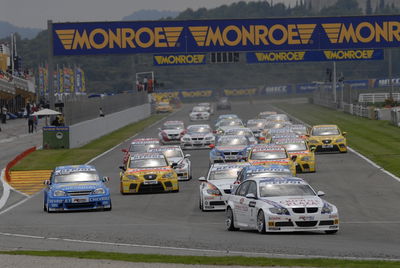New ballast system for WTCC.
From next season, a system of 'compensation weights' will replace the controversial 'success ballast' system in determining equality in the World Touring Car Championship.
Whereas the old system adjusted individual car weights based on the results obtained by their drivers, the 'compensation weight' scheme will balance the performance between models.

From next season, a system of 'compensation weights' will replace the controversial 'success ballast' system in determining equality in the World Touring Car Championship.
Whereas the old system adjusted individual car weights based on the results obtained by their drivers, the 'compensation weight' scheme will balance the performance between models.
Although results and lap times proved its effectiveness, the success ballast system had two weak points. Firstly, it disguised the identity of the best drivers and, secondly, because of major technical differences between the cars - such as front or rear-wheel drive, petrol or diesel engines - the FIA Touring Car Bureau had to issue a number of technical waivers to further balance performance.
The new 'compensation weights' will solve these problems, being an objective system based on models' homologation number instead of driver's results, all drivers in the same model of car will carry the same weight, similar to the system in place in Germany's DTM.
The new system will be based on a lap time calculation process, with the best times of the two fastest cars of each model in qualifying, and the best two lap times of the two fastest cars of each model in both races being averaged. The calculation will be based on a three-event rolling average, with the only exception being that it will be applied for the first time after the first two events.
If, after the calculation, a model's average time is within a three-tenth threshold of the fastest model, no action will be taken. However, if a particular model is slower than the fastest by more than 0.3secs, 10kg will be deducted for every complete tenth beyond the threshold, up to a maximum of 60kg. If, subsequently, the model gets within three-tenths, it will lose the weight deduction on the same basis of 10kg per 0.1secs.
Organisers have admitted that the system will not attempt to achieve exact equality, but rather seeks to bring slower cars up to a competitive position within three-tenths of the pace. It is hoped, therefore, that success will depend on the best car/driver/team combination rather than the ballast system as it has in the past.











